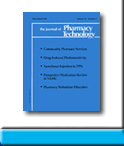 |
 |
RIFAPENTINE: ITS ROLE IN
THE TREATMENT OF TUBERCULOSIS
Mary E Temple and Milap C
Nahata
To request full article click here.
OBJECTIVE: To review the pharmacokinetics, efficacy, adverse effects, and cost of the newest antitubercular drug, rifapentine.
DATA SOURCES: A MEDLINE search using key terms such as rifapentine, rifampin, isoniazid, Mycobacterium tuberculosis, and pyrazinamide was conducted for the time period 1966–November 1998.
STUDY SELECTION: Animal data were used for basic information and human studies were selected for inclusion if they were randomized, controlled studies assessing efficacy, or if they were single- or multiple-dose studies assessing the pharmacokinetics of rifapentine. Background articles on the pathophysiology of tuberculosis and cost of care and noncontrolled studies assessing drug interactions were also included.
DATA SYNTHESIS: Compared with an oral solution, the relative bioavailability of rifapentine is 70% following oral administration of tablets. Food increased bioavailability by 55%. Rifapentine accumulated significantly in human macrophages, and its elimination half-life was longer than that of rifampin. Comparative studies of rifapentine and rifampin in humans during intensive- and continuation-phase treatment of tuberculosis suggest that at currently accepted doses, rifapentine was slightly less effective than rifampin. The most significant drug interaction with rifapentine involves indinavir. Adverse events of rifapentine may occur less frequently at the currently recommended 600-mg dose compared with rifampin; however, the difference was not statistically significant. If only drug costs were evaluated during the six-month treatment of tuberculosis, rifapentine is more expensive than rifampin.
CONCLUSIONS: Rifapentine can be administered twice weekly during the intensive phase of tuberculosis treatment and then once weekly during the continuation phase of treatment. This may improve patient adherence over some other treatments and possibly reduce costs of treatment by preventing development of resistant tubercular strains due to nonadherence. Rifapentine is well tolerated, with most patients experiencing adverse effects at a similar rate as rifampin. Rifapentine induces cytochrome P450 somewhat less than rifampin, although few drug interaction studies have been done with rifapentine. Its efficacy at the currently approved dosage of 600 mg may be slightly lower than that of rifampin. Studies are needed to determine whether equal or greater efficacy can be achieved with higher doses of rifapentine. Rifampin is less expensive than rifapentine. Further pharmacoeconomic studies are needed to evaluate costs of relapse and failure in patients receiving these agents.
J Pharm Technol 2000;16:35-40.
To request full article click here.
|
|
|
||
|

